Centipedes are arthropods, which include multi-legged species, such as millipedes and centipedes. Centipedes are long creatures with one pair of legs for each body segment.
They are beneficial in the garden, helping to decompose up to 10% of leaf litter. They also benefit soil microorganisms, that work together to turn any debris into nutrient-enriched soil.
They can lose some legs over their lifetime and they are fast and will run and hide if approached, usually to a dark corner or area.
Table of Contents
Common Types of Centipedes
The most common types of centipedes include:
1. House Centipede
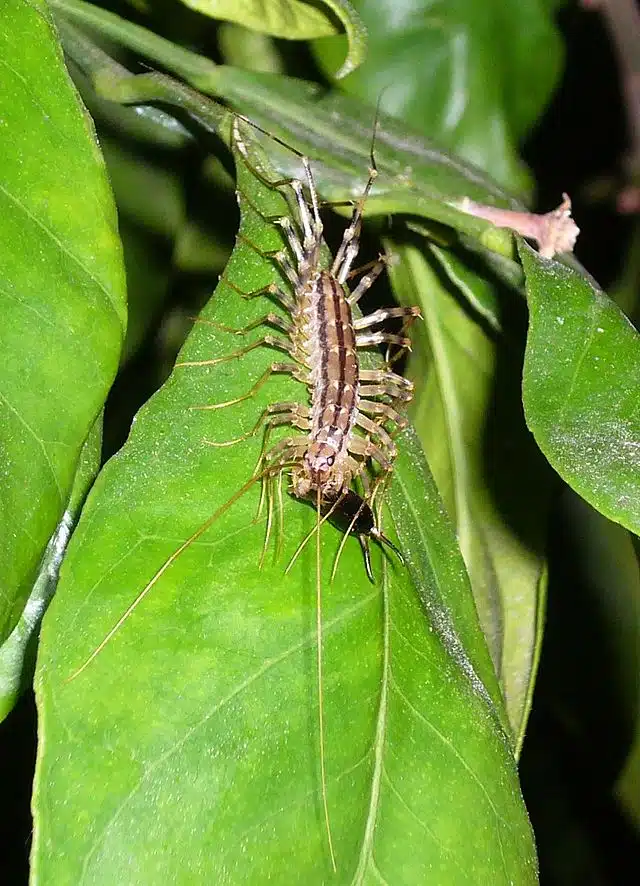
House Centipedes (Scutigera coleoptrata) are yellow/gray with up to fifteen pairs of long legs. They originate in the Mediterranean and have spread throughout the world, living in human homes. They kill and eat other arthropods, including insects and spiders.
Outside, they live in damp and cool spaces, under rocks, woodpiles, and leaf litter. They seem to prefer compost piles. When encountered in the home, they are often found in dark areas, such as garages and basements, bathrooms, and offices.
They are mostly found on the floor, though they are able to climb walls. They are more common in the spring when they emerge due to warm weather, seeking cooler environments in human homes.
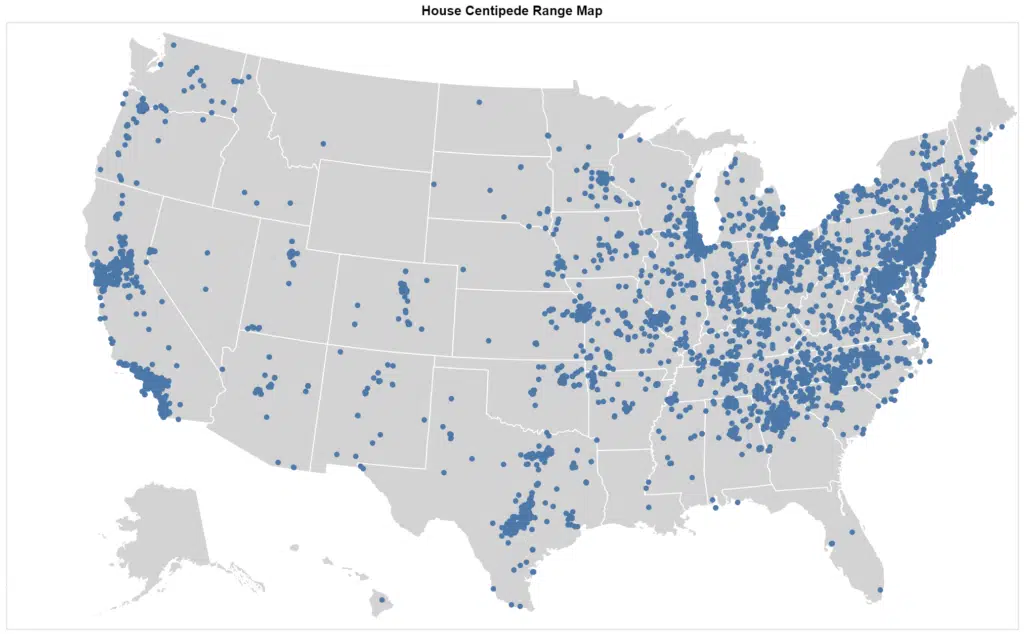
In the United States, they are more common in the Pacific Northwest, though they have been seen in Pennsylvania, New York, Massachusetts, Connecticut, Virginia to California.
2. Common Desert Centipede
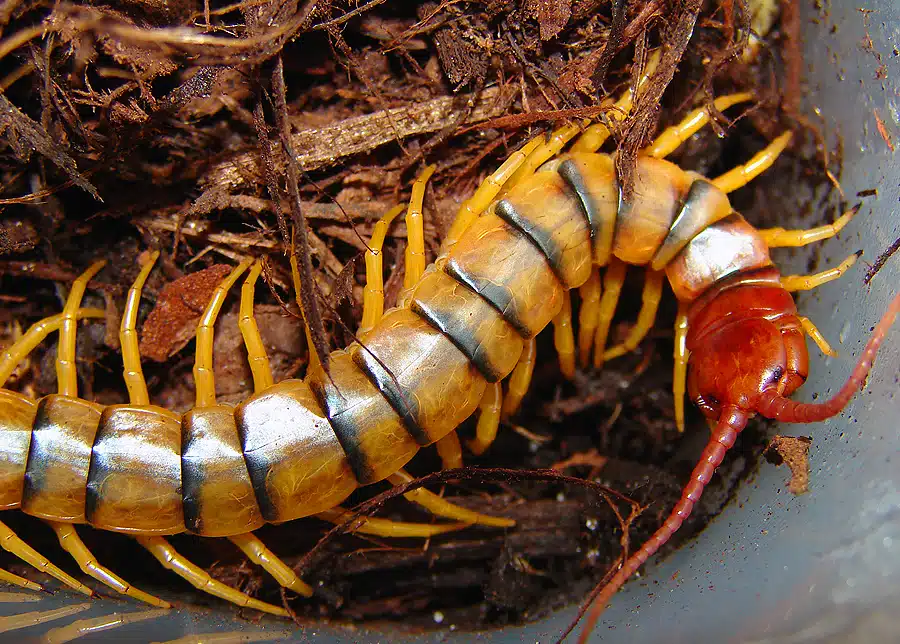
The Common Desert Centipede (Scolopendra polymorpha) is also known as the tiger centipede or banded desert centipede. They are also sometimes referred to as the Sonoran Desert centipede. They are indigenous to the Southwestern United States and North Mexico, all the way to the Pacific Coast.
These centipedes prefer dry grasslands, deserts, and forest areas, hiding under rocks. They are known to create burrows.
The common desert centipede can grow to 18cm in length. Their bodies have a dark lateral stripe. They usually have a dark brown, red, or orange head with a light brown to tan body with yellow legs.
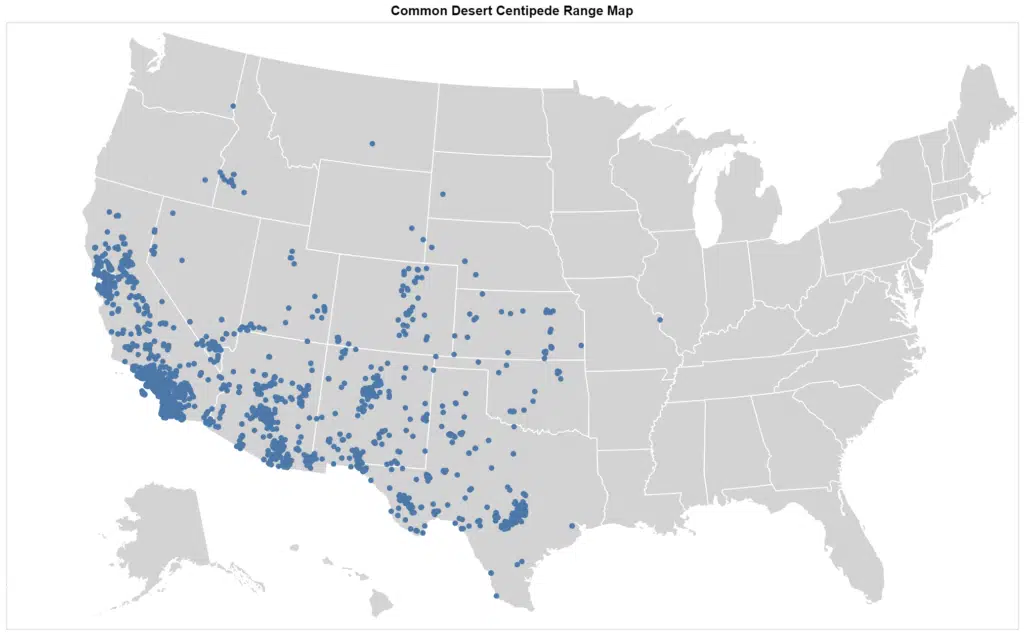
The common desert centipede in southern California is light blue with indigo stripes and turquoise legs. This centipede’s venom has been determined as medically relevant, showing antimicrobial activity, which is the leading cause of food poisoning, urinary tract infections, and pneumonia.
This centipede is indigenous to Arizona deserts, found under rocks, where they are mostly active at night when temperatures are lower.
3. Giant Desert Centipede
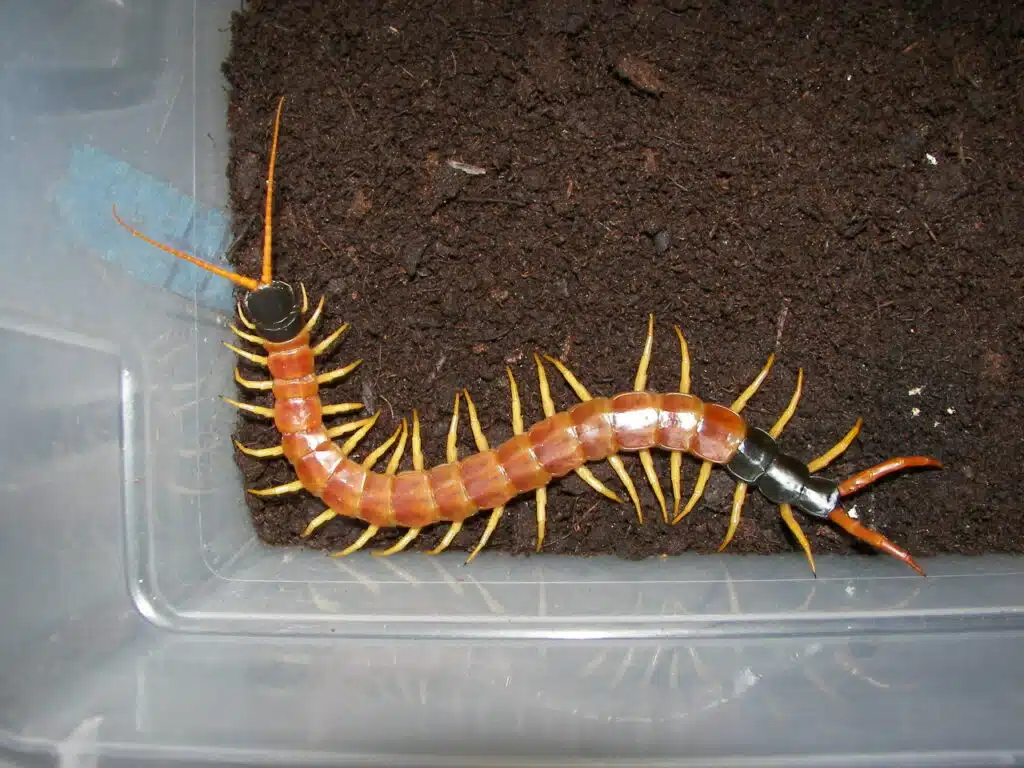
The Giant Desert Centipede (Scolopendra heros), also known as the giant Sonoran centipede or Texas redheaded centipede is a North American species found in the southwestern United States. They are the largest centipede in North America.
They can grow to 200mm in the wild and longer when in captivity. They can have up to twenty-three pairs of legs. In Arkansas, Missouri, and Texas they have red heads with a green to black body and tail.
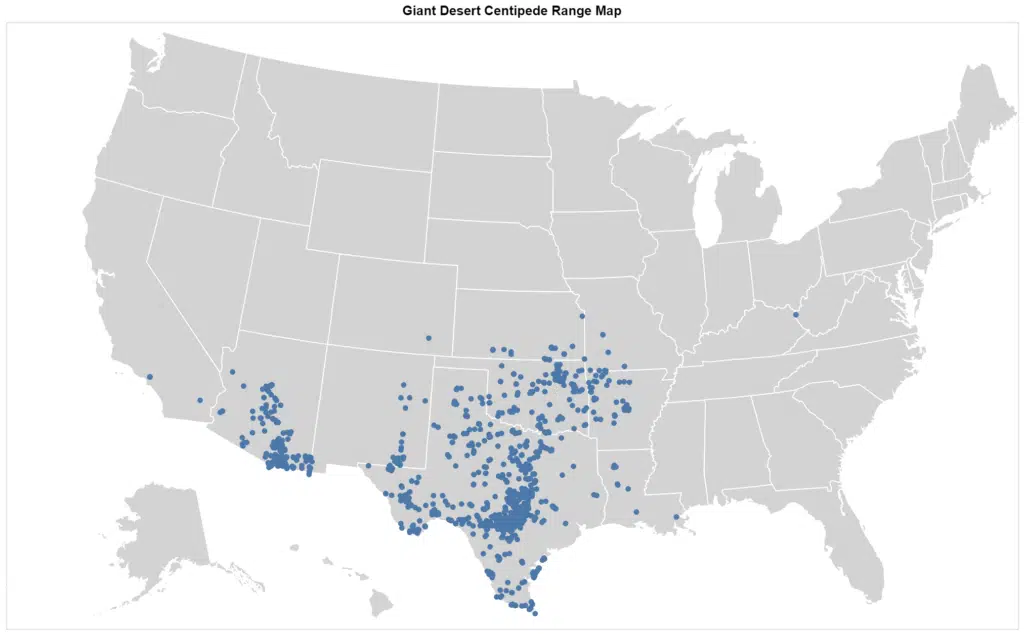
They are common from New Mexico and Arizona to Missouri, Louisiana, and Arkansas. They are found in rocky woodland areas, remaining underground in warmer weather and coming out on cooler days.
4. Eastern Bark Centipede
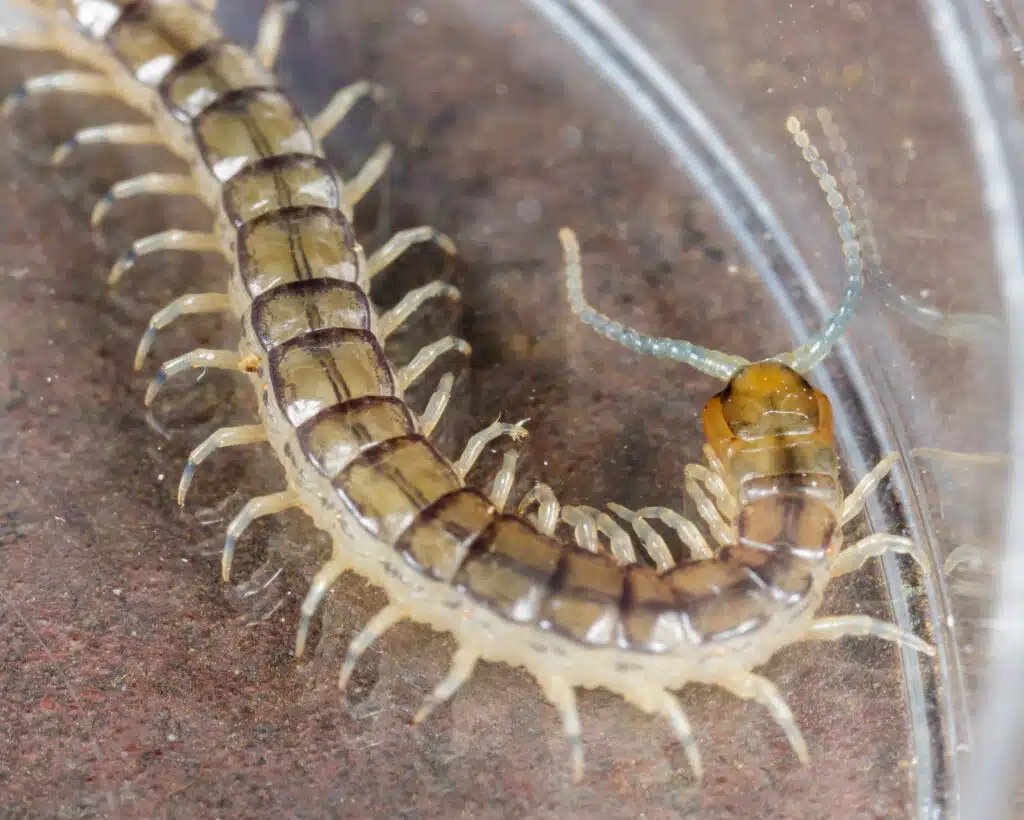
The Eastern Bark Centipede (Hemiscolopendra marginata) can be found in North, Central, and South America, growing to 75mm. They have blue dorsum with a blue tick on their legs.
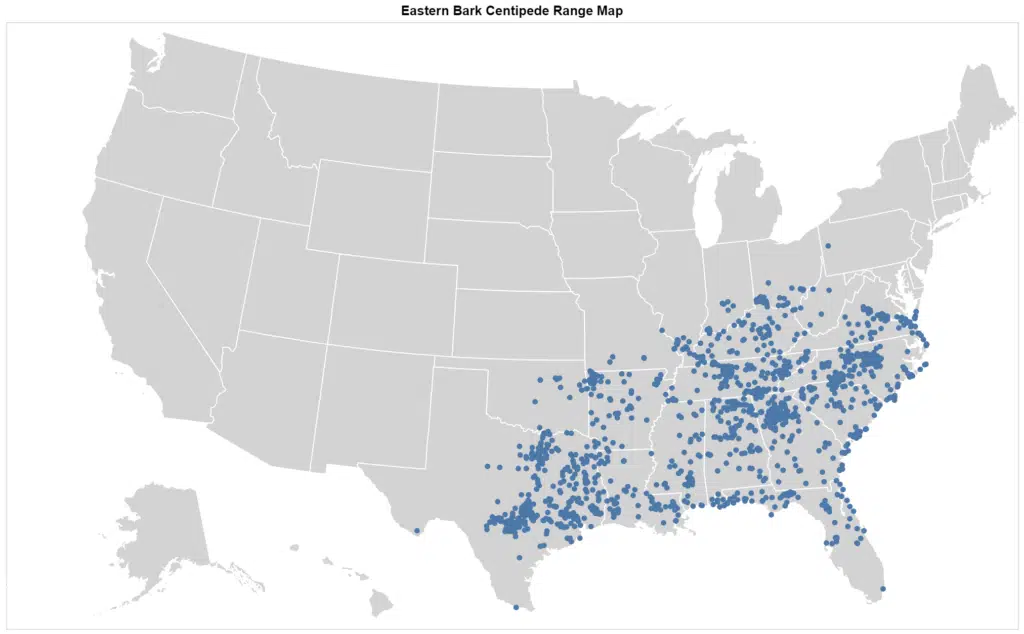
These centipedes can be found from the James River in Virginia to the southern peninsula in Florida. They are also common in Oklahoma and Texas.
5. Eastern Red Centipede
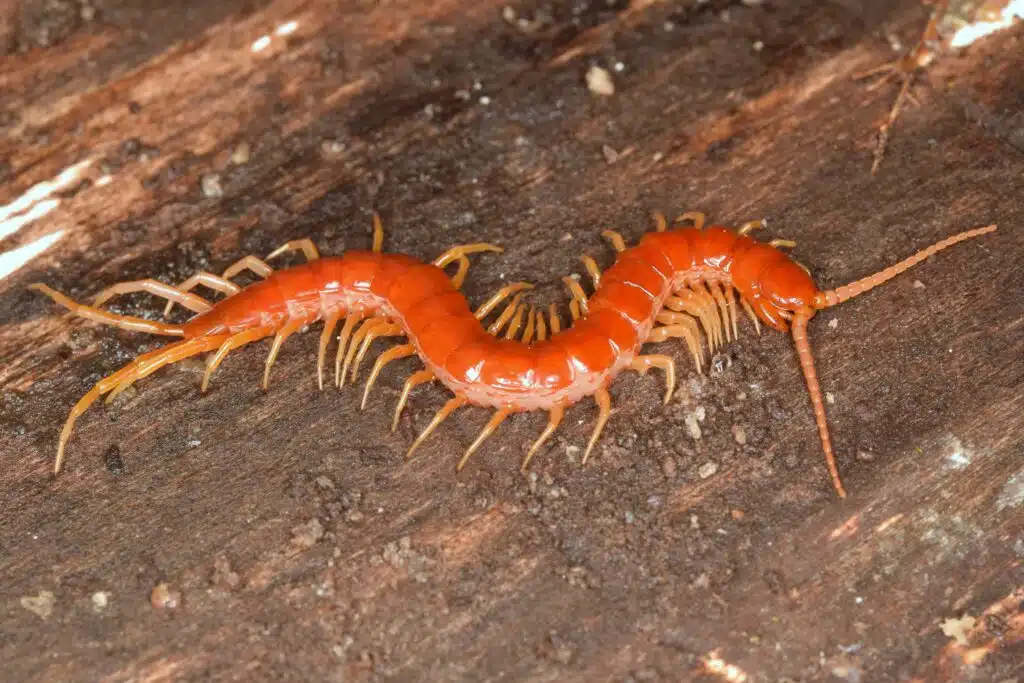
The Eastern Red Centipede (Scolopocryptops sexspinosus) is common in North America. They are fast-moving and very agile. They have flattened segments, enabling them to squeeze through very narrow spaces.
The bodies are red/brown with yellow legs. There is one pair of legs per body segment. They are mostly outdoor centipedes, though they are known to be found indoors, normally in cellars and basements. They are mostly encountered at night.
The Eastern red centipedes have fangs that inject venom into their prey, but they can bite humans if threatened. It is not recommended that you pick one up. Their bite is not fatal to humans but can be painful and cause irritation.
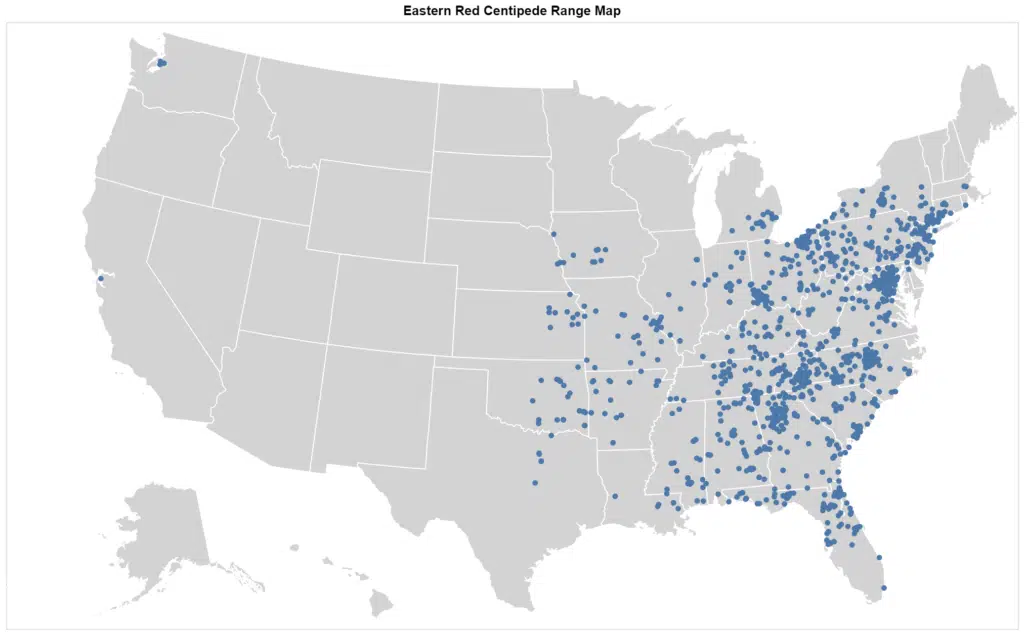
These centipedes are more common in Mississippi, Alabama, and Georgia with the most observations being in Delaware.
6. Brown Centipede
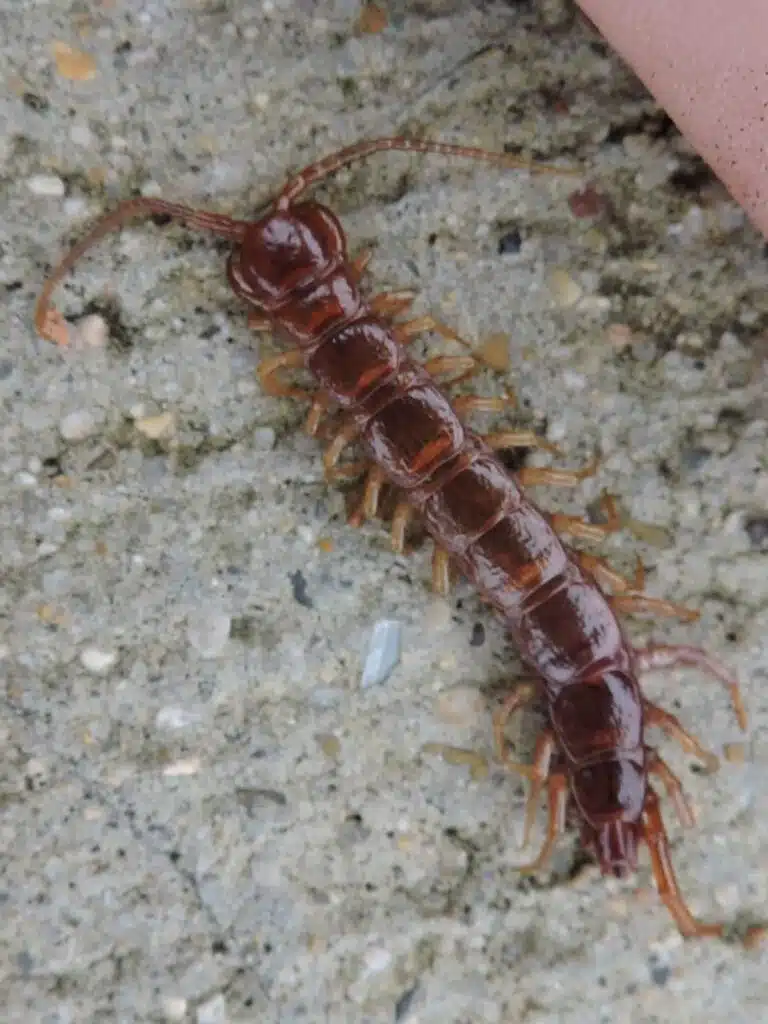
The Brown Centipede (Lithobius forficatus) is also known as the stone centipede and is common in Europe, though it is distributed throughout the world. These centipedes grow to 30mm in length and are chestnut brown in color.
They are found in the upper layers of soil, under rocks, and rotting logs. They run quickly for cover if disturbed. Their diet consists of insects and invertebrates, including slugs, flies, worms, and spiders.
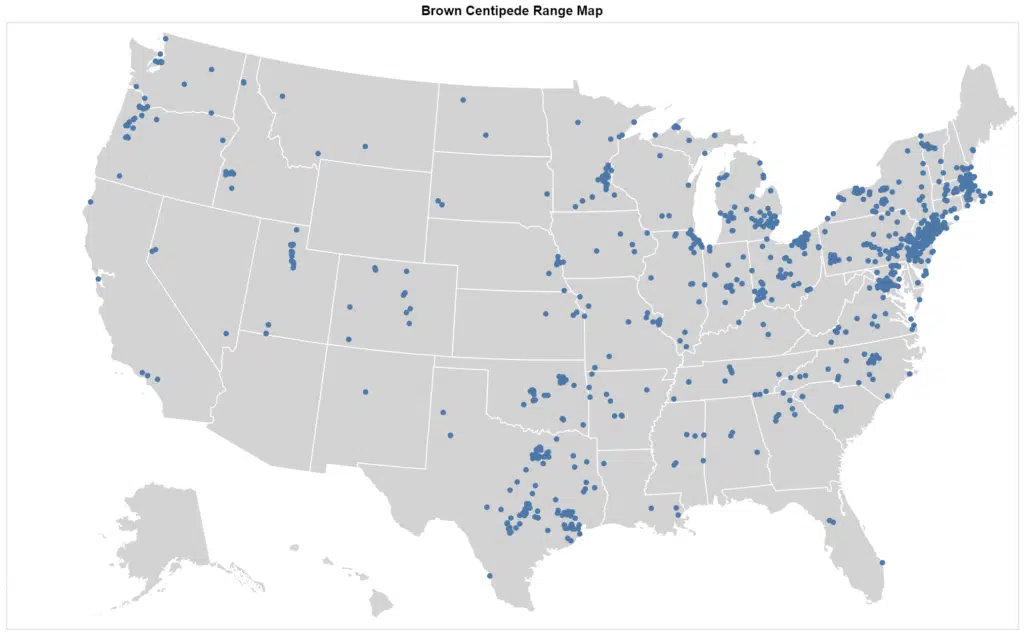
The brown centipede has mostly been observed in Washington, Philadelphia, and New York.
7. Florida Blue Centipede
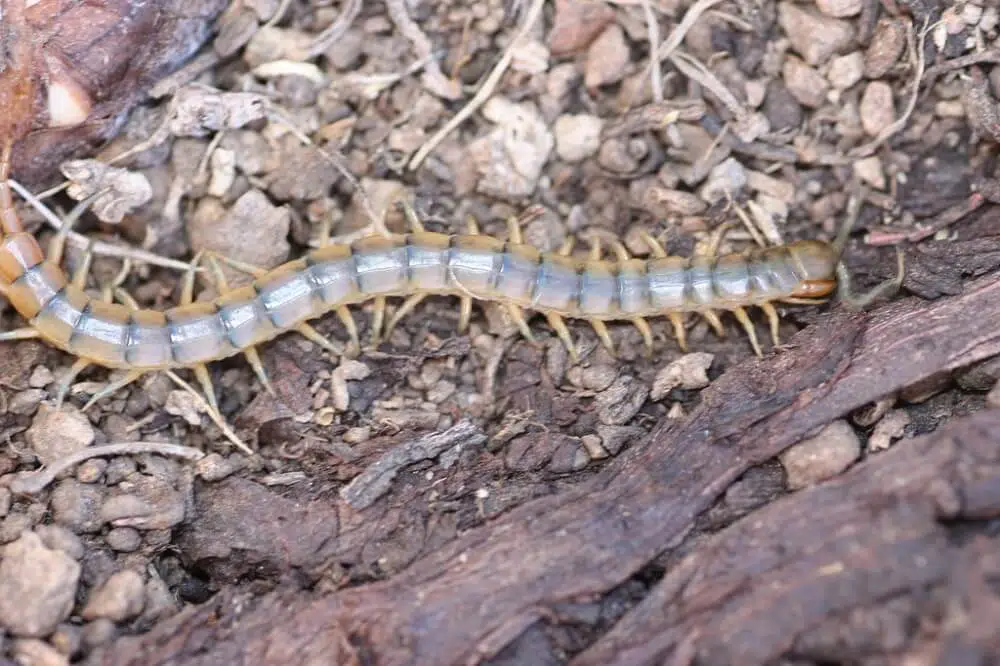
The Florida Blue Centipede (Scolopendra viridis) has mostly been observed in Palm Beach, Miami, and Orlando. They are often found in the Apalachicola National Forest in Florida. They are fast and will run if disturbed.
Do not be fooled, the Florida blue centipede will bite if threatened, which is painful, but completely harmless to humans. They are blue with light brown/tan sides and legs.
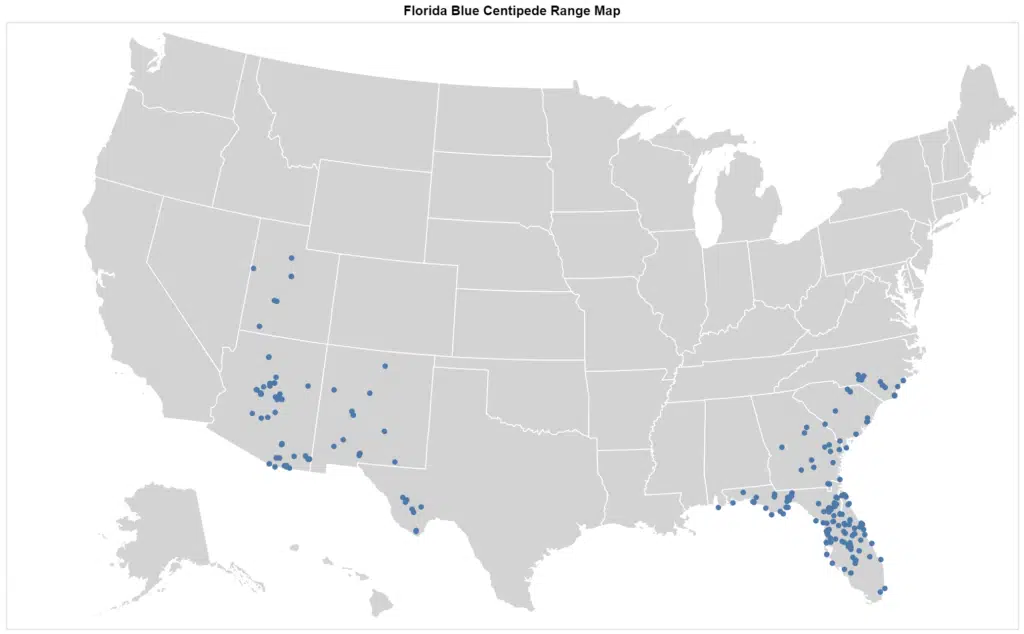
8. Western Fire Centipede
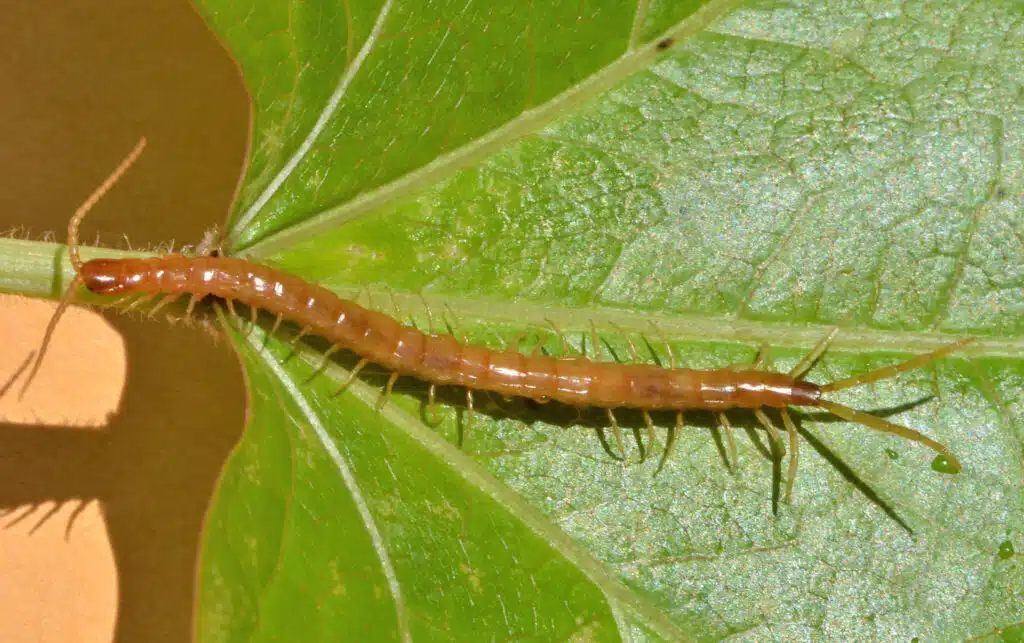
Western Fire Centipedes (Scolopocryptops gracilis) are long and flat with a pair of legs on each segment, except the last two segments. They can comprise up to one hundred and seventy body segments, which are not fused.
The front pair of legs are modified into venomous claws, found just behind the head. This particular centipede is more common in Sacramento, Los Angeles, San Francisco, and San Jose, with some sightings in Santa Rosa.
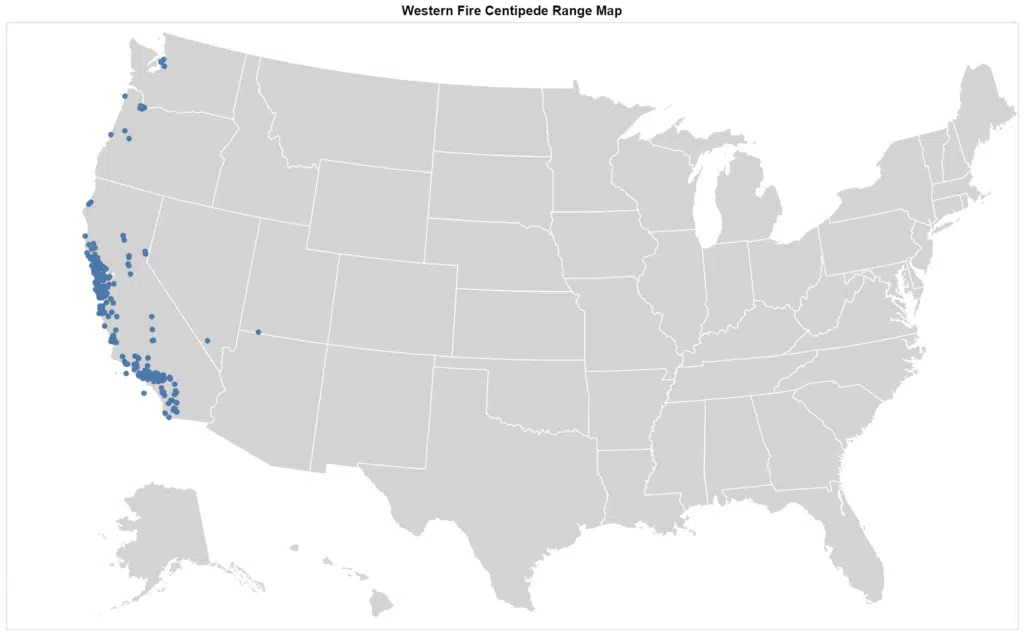
9.Pacific Giant Centipede
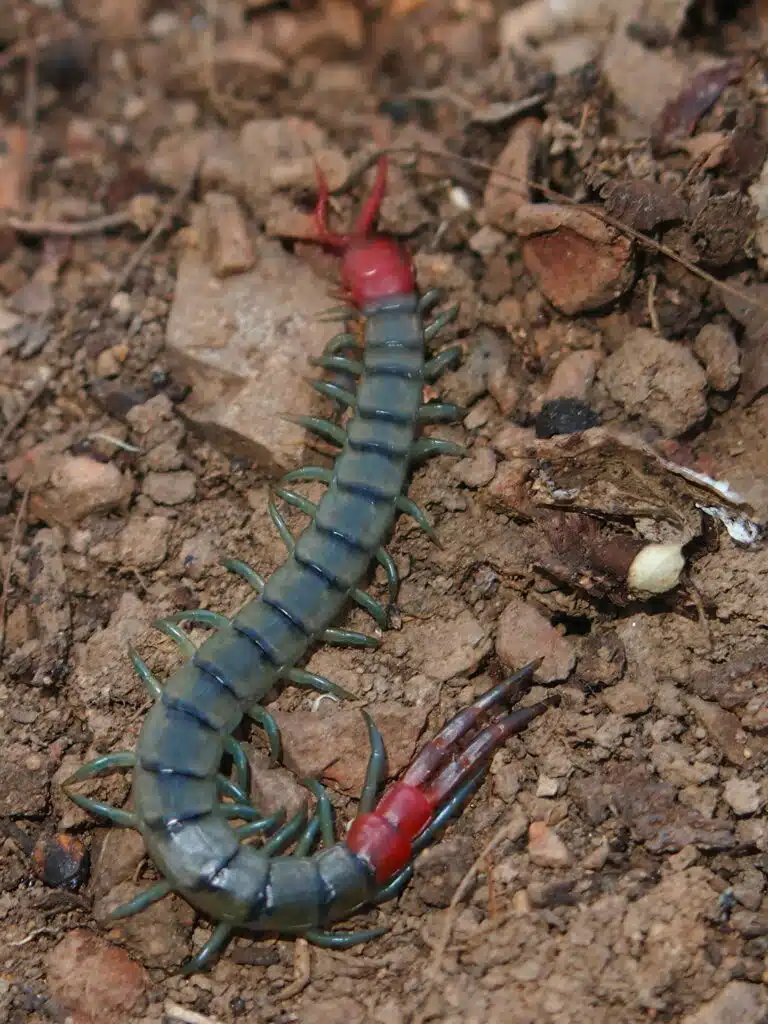
The Pacific Giant Centipede (Scolopendra subspinipes) is a large centipede from eastern Asia and is widespread and common throughout the Indian Ocean from Asia, Russia, and Malaysia to Australia, central and south America to the Caribbean islands.
There are numerous color variations and has a variety of names including the jungle centipede, orange legged centipede, red-headed centipede, Chinese red-headed centipede, and more.
They grow to 20cm in length and are active and aggressive predators. They are usually red or red/brown with yellow or yellow/orange legs. They have twenty-two body segments with each segment having a pair of legs.
They are common in tropical and subtropical regions and are one of three species found in Hawaii.
10. Minor Blueleg Centipede
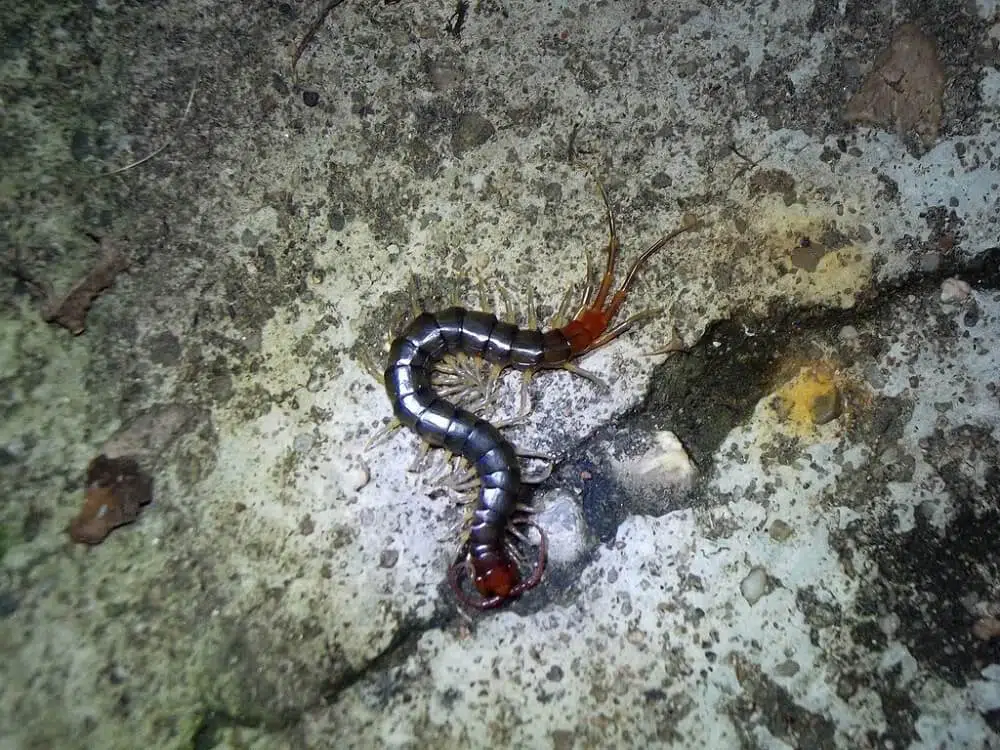
The Minor Blueleg Centipede (Rhysida longipes) is a common pet in some countries. They are blue with brown legs and have been observed in Dallas, Louisiana, and Miami, along with Mexico and Indonesia.
11. Red-headed Centipede
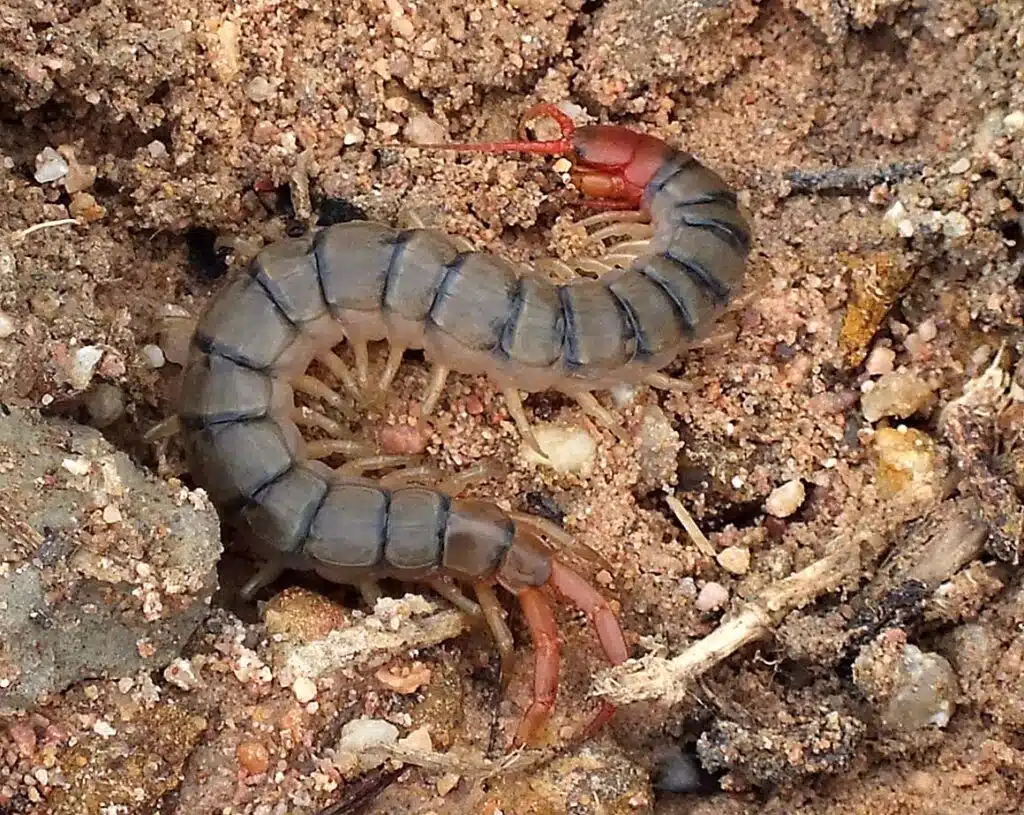
The Red-headed Centipede (Scolopendra morsitans), also known as the Tanzanian blue ringleg should not be confused with the Chinese red-headed centipede. This centipede can grow to 15cm with females being larger than males.
Their antennae comprise seventeen segments and they have eight eyes, four on each side of their heads. They are commonly encountered in Southern Africa, Australia, Southern Asia, and the Caribbean. They are invasive species.
12. Common Cryptops
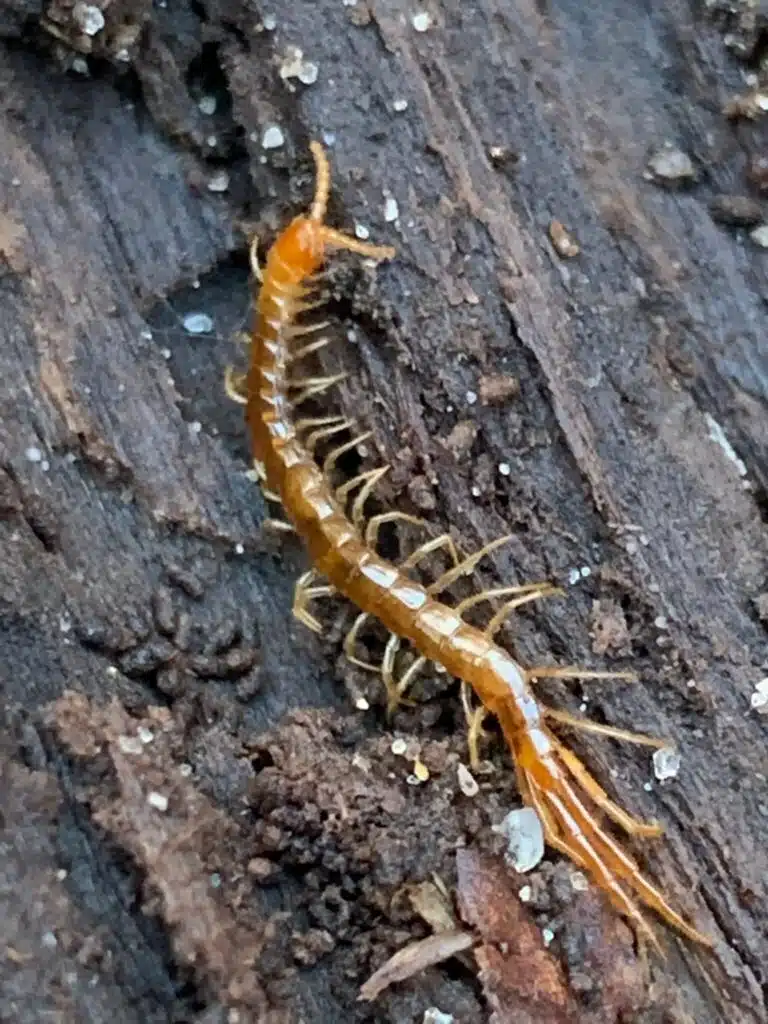
Common Cryptops (Cryptops hortensis) are common in Europe and have been introduced into North America. They grow to 30mm in length with a 1mm body width. They are pale brown with twenty-one pairs of legs.
They are usually encountered in woodlands and gardens, hiding under stones and logs. The common Cryptops have been observed in South Carolina, Arkansas, Texas, Washington, Chicago, Philadelphia, and New York.
13. Arizona House Centipede
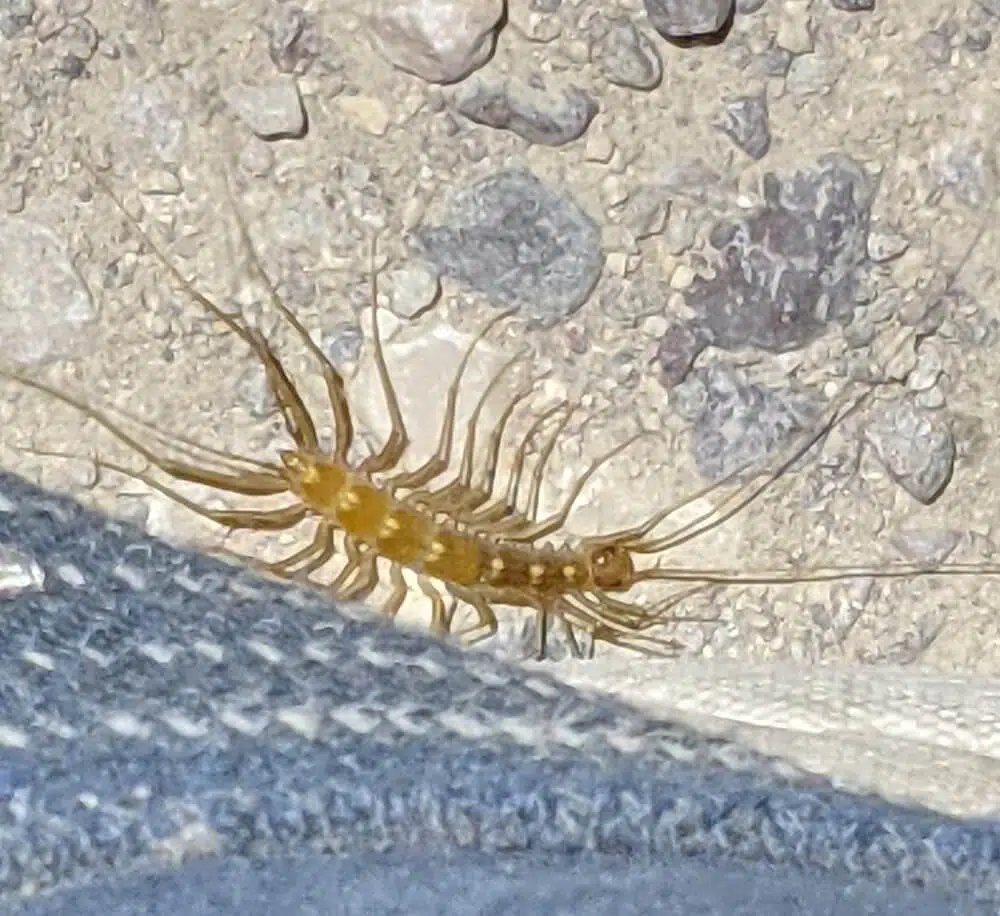
The Arizona House Centipede (Scutigera linceci) has been observed ninety-two times, mostly in Texas and Phoenix. These centipedes are brown to black in color with long legs.
Summary
Centipedes are interesting, usually with more than one hundred legs, preferring dark and moist areas. They are not usually a concern to homeowners, in fact, they are beneficial as they feed on pests, such as flies, other insects, and spiders.
They are an ancient species, dating back more than four million years and they can live up to six years. They are pets in some countries.
Be aware that some can give quite a painful bite, but they are not considered medically signific.
Further Reading: